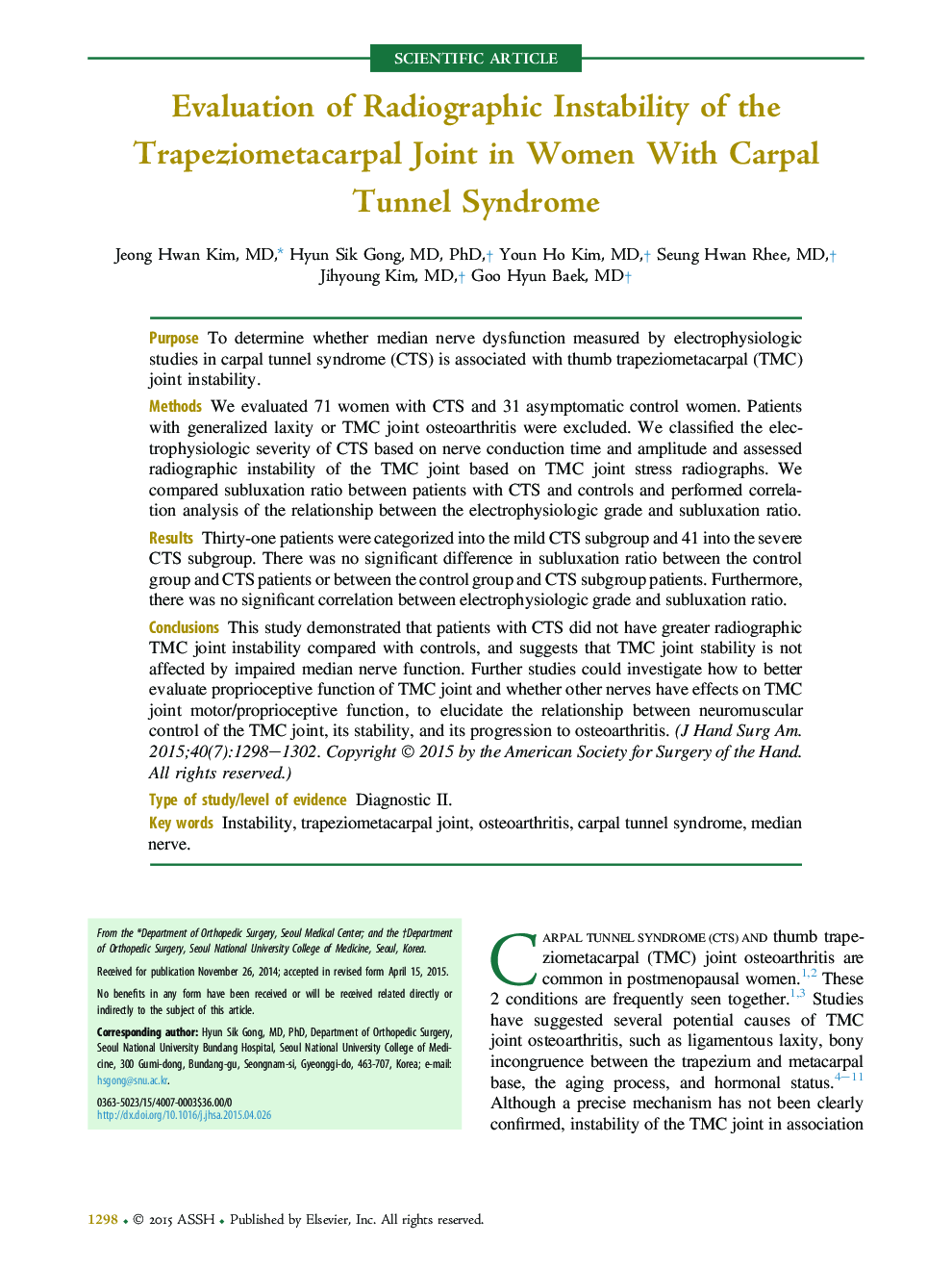| Article ID | Journal | Published Year | Pages | File Type |
|---|---|---|---|---|
| 4066618 | The Journal of Hand Surgery | 2015 | 5 Pages |
PurposeTo determine whether median nerve dysfunction measured by electrophysiologic studies in carpal tunnel syndrome (CTS) is associated with thumb trapeziometacarpal (TMC) joint instability.MethodsWe evaluated 71 women with CTS and 31 asymptomatic control women. Patients with generalized laxity or TMC joint osteoarthritis were excluded. We classified the electrophysiologic severity of CTS based on nerve conduction time and amplitude and assessed radiographic instability of the TMC joint based on TMC joint stress radiographs. We compared subluxation ratio between patients with CTS and controls and performed correlation analysis of the relationship between the electrophysiologic grade and subluxation ratio.ResultsThirty-one patients were categorized into the mild CTS subgroup and 41 into the severe CTS subgroup. There was no significant difference in subluxation ratio between the control group and CTS patients or between the control group and CTS subgroup patients. Furthermore, there was no significant correlation between electrophysiologic grade and subluxation ratio.ConclusionsThis study demonstrated that patients with CTS did not have greater radiographic TMC joint instability compared with controls, and suggests that TMC joint stability is not affected by impaired median nerve function. Further studies could investigate how to better evaluate proprioceptive function of TMC joint and whether other nerves have effects on TMC joint motor/proprioceptive function, to elucidate the relationship between neuromuscular control of the TMC joint, its stability, and its progression to osteoarthritis.Type of study/level of evidenceDiagnostic II.
